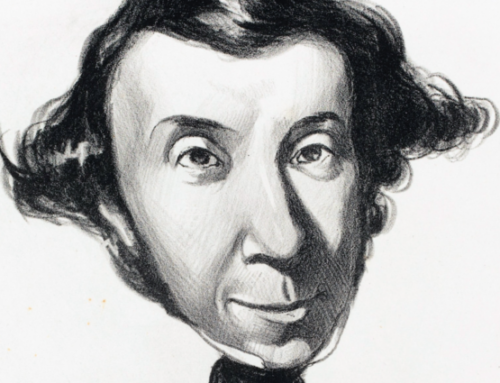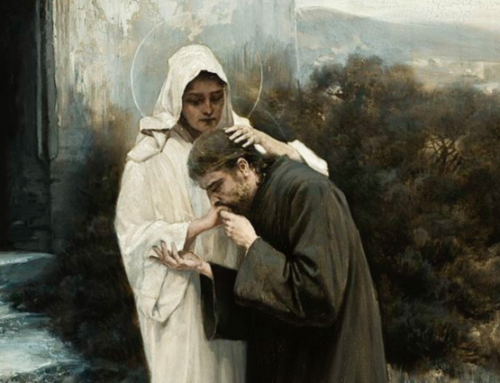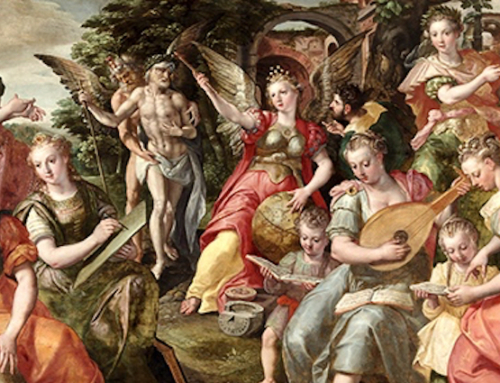As the rift in Western culture between secular traditions and sacred traditions grows wider, the scramble to explain ourselves, to sublimate our experiences and give them meaning, becomes increasingly frantic…
 My husband and I couldn’t do family Christmas gifts this year, so instead we decided to write thoughtful notes to each family member reflecting on the year. But when we went out to get cards at 3:30 p.m. on December 24, we were dismayed to find that the Christmas materials had been relegated to a dwindling stock in the corner, and the main “holiday” aisle was dedicated to (you guessed it) Valentine’s Day. We could get pink M&Ms or heart-shaped Russell Stover’s boxes, but it was lean pickings for Christmas cards and the holiday hadn’t even officially begun.
My husband and I couldn’t do family Christmas gifts this year, so instead we decided to write thoughtful notes to each family member reflecting on the year. But when we went out to get cards at 3:30 p.m. on December 24, we were dismayed to find that the Christmas materials had been relegated to a dwindling stock in the corner, and the main “holiday” aisle was dedicated to (you guessed it) Valentine’s Day. We could get pink M&Ms or heart-shaped Russell Stover’s boxes, but it was lean pickings for Christmas cards and the holiday hadn’t even officially begun.
It’s a stark reminder that the traditions of secular Christmas are a dry well. Every child knows the sinking feeling of the day after Christmas, when the daily routine settles in again and everything goes back to normal. Our day-to-day existence often feels like standing on the edge of the unknown, and without a larger narrative—a myth—to tie ourselves to, that uncertainty can crush us. Traditions link our day-to-day lives to a myth. They are tangible activities that involve our bodies, not simply our minds, and remind us body and soul of what is important and true.
Ever since the secular and the sacred calendars fell into alignment at the dawn of Christendom, traditional holidays like Christmas have borne a double burden. They have to fulfill our sense of connection to the state and society as well as our spiritual longings. But today, as society drifts further and further from even acknowledging spiritual longings, secular Christmas can’t stave off the malaise of the mundane. In the whirlwind of the holidays and the letdown we feel afterwards, we have to make a conscious choice about which Christmas we’re going to celebrate: the secular one that seeks to sublimate reality, or the sacred one that promises to save it.
Rousseau Can’t Save Us
Sublimation was originally an alchemical term. It was the action of purifying a thing by vaporizing it, to eliminate all impurities, and then allowing it to cool. Despite alchemy’s promise that it could transform a compound into a different compound (most famously iron into gold), sublimation does not actually change the nature of the thing. It simply clarifies what already exists. Impurities can still adhere to the compound, and further working with the thing will simply reintroduce the flaws.
The eighteenth-century French philosopher Jean-Jacques Rousseau loved the idea of sublimation and applied it liberally to his theories of society and education. The original meaning of “refinement” narrowed to a more specific meaning of “exaltation,” by which Rousseau meant attributing universal meaning to a mundane experience to elevate and validate it. Rousseau believed that societies had to sublimate certain experiences in order to survive, because otherwise there was no meaningful explanation of day-to-day life.
Rousseau’s sublimation is the best we can hope for from secular traditions. Secular Christmas music, even the best, exemplifies this attempt to sublimate experienced feelings—of loneliness (“I’ll Be Home for Christmas,” “Have Yourself a Merry Little Christmas”), nostalgia (“White Christmas”), or love (“Let It Snow”)—beyond their context in ordinary life and elevate them to the level of the sublime. A sublime experience is a universal experience, one that has meaning outside of itself that both clarifies and validates it. This is the purest impulse of secular Christmas: to elevate our experiences to the level of the universal, and in so doing, to create a myth of Christmas to validate the feelings that punctuate our lives, even if just for one day.
We all hold an ideal of secular Christmas in our imaginations, even though for most of us it has never happened: cottages covered in snow, lanes fretted with sleigh tracks, children laughing, clear voices singing in a village square lit by lamps. Countless sugar cookies made by a smiling family while a perfect tree gleams in the corner and orphans smile at the feet of Santa Claus. It’s the Gospel according to Thomas Kinkade. But in this picture, the light illumines only itself, reflecting endlessly. It doesn’t illumine—or transform—the things of the world.
Cards, songs, gifts, family, masterful dinners, days off work—these are all beautiful parts of being human. But as a friend posted, poignantly, on Facebook, “[My son] is not interested in presents he has opened but in those he has yet to open”: The best these things can do is distract briefly from reality.
A tradition is only as good as the myth it connects us to. There is no single event in the American calendar as jammed with traditions as Christmas; it’s a complex blend of the religious and the secular, the community sphere and the commercial sphere, the ancient and the tinsel-shiny new. It’s one of the few times when Americans openly and unashamedly seek to infuse our cultural experience with shared transcendent meaning. The foment of “holiday spirit” that starts before Thanksgiving promises us that for one day we’ll be joyful, free from worry, with the peace that eludes us the rest of the year.
But before the day has even begun, the stores are full of the next thing, because deep down inside we know that at the end of Christmas Day, we’ll be right back where we started: tired and worried and afraid. The idyll offered by secular Christmas isn’t real, any more than Thomas Kinkade’s landscapes are real. And it cannot save us.
Another Tradition
But there is another tradition of Christmas, another anchor linking us to a myth. This is the one we see in Rembrandt’s unforgettable Nativity. Here the light doesn’t simply hover around the Christ or cling to the clustered figures; it bubbles up like water from a spring and illumines them, igniting in them a light that before had never burned. This painting is not a crystallization of a moment that is cleansed and contemplated, like the image of a lit cottage covered in snow; it is a record of a fundamental change in reality, one that transforms the way we think about all human experiences before and after.
When I was young there were no Valentine’s decorations in the stores before Christmas. But as the rift in Western culture between secular traditions and sacred traditions grows wider, the scramble to explain ourselves, to sublimate our experiences and give them meaning, becomes increasingly frantic. The sacred traditions stand out more starkly: a midnight Mass in candlelight, voices singing “Joy to the World!” around tears of that same joy, silent prayer under the stars. We need the wisdom of Mary more than ever as she, in the midst of a whirlwind of miracles, “treasured up all these things in her heart,” because, no matter what the stores may say, Christmas is not over. It is the restoration of all things, and it has just begun.
Republished with gracious permission from The Intercollegiate Review (January 2016).
The Imaginative Conservative applies the principle of appreciation to the discussion of culture and politics—we approach dialogue with magnanimity rather than with mere civility. Will you help us remain a refreshing oasis in the increasingly contentious arena of modern discourse? Please consider donating now.
The featured image is by fotoblend and is from Pixabay.







Leave A Comment